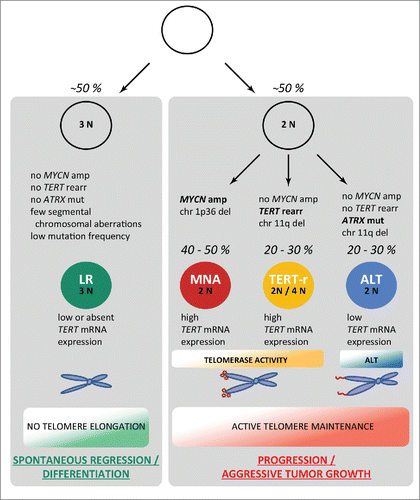Figures & data
Figure 1. A model for neuroblastoma pathogenesis based on recurrent genomic alterations (modified after ref. 6). High-risk neuroblastoma differs from low-risk tumors (LR) by active mechanisms of telomere lengthening: (i) via telomerase activation as a result of either TERT rearrangements (TERT-r) or amplified MYCN (MNA), or (ii) by alternative lengthening of telomeres (ALT). 2N, near-diploid karyotype; 3N, near-triploid karyotype; 4N, near-tetraploid karyotype; amp, amplification; rearr, rearrangement; mut, mutation; del, deletion.

